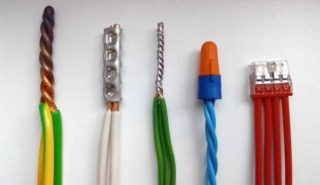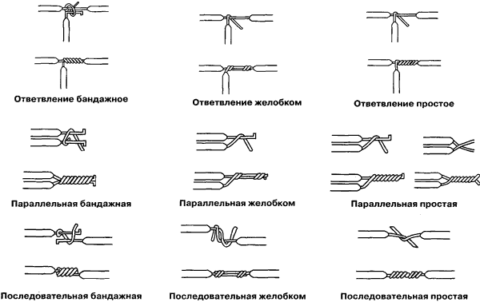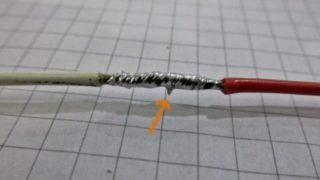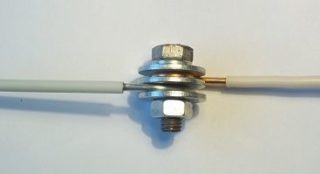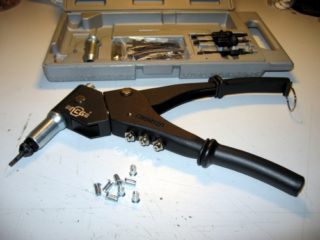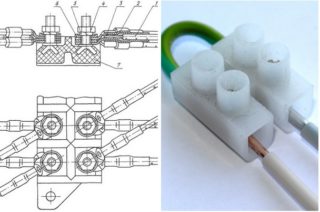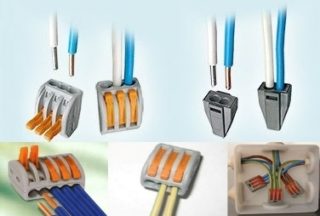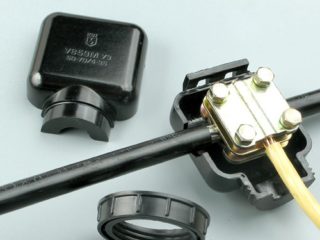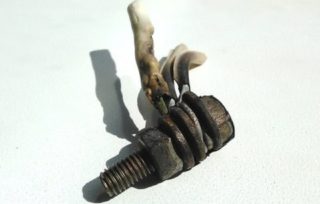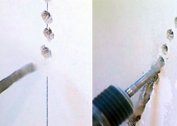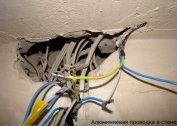In the houses of the old building, aluminum wiring was installed. It has many disadvantages compared to copper and requires replacement. But not always the tenants of the apartments carry out major repairs and completely change the wiring. It can be replaced partially. Creating a reliable contact requires compliance with certain nuances and conditions, which should be familiarized with before repair work.
Why can not connect copper and aluminum in the wiring
Aluminum wiring performed all its functions in old houses. Previously, electronic devices did not require high power. But with the development of technology, the load on wires and sockets began to increase, because of which I had to look for new materials that could work under high voltage. This leads to the fact that it may be necessary to extend the aluminum cable with copper.
Direct connection of aluminum and copper wires is not possible. First of all, incompatibility is associated with the properties of aluminum. It is oxidized and destroyed faster. When combined with copper, the destruction process is faster. Heating is due to the fact that the resistivity of aluminum is higher than that of copper. Also, aluminum is softer and has less electrical conductivity.
Copper and aluminum are galvanically incompatible. When touched, a chemical electrolysis reaction occurs that worsens contact. The connection point is oxidized or heated, the insulation layer is destroyed, which increases the risk of a short circuit or fire. The process accelerates in conditions of high humidity.
Basic connection methods
To make proper reliable contact between two different materials, special devices are used. They can be divided into two categories according to the presence between the stranded wires of the contact:
- There is direct contact. Achieved by such methods as twisting, crimping, soldering.
- There is no direct contact. It is carried out using terminal blocks and threaded fixation.
To connect an aluminum wire with a copper one, it is better to use the second option. The first method can be implemented only if the copper conductors are previously processed.
Twisting
This method is used in domestic conditions for a short time. Cable twisting is unreliable, quickly warms up and collapses. According to the requirements of the PUE, it is forbidden to use twisting in electrical wiring, especially when connecting two different materials.
Soldering
Two wires of different materials can be soldered to each other. But you need to solder the wires only subject to the technological features of each material. Copper and aluminum must be prepared for soldering. Difficulties can arise precisely with aluminum conductors. A thin oxide film forms on its surface, due to which the solder does not adhere to the wires. It can be neutralized with a special device.
The end of the wire is cleaned and processed with copper sulfate in the form of a solution. Next, you need a battery. The conductor is attached to the minus. Copper is installed on the plus, the second end of copper - in the solution. After some time, a plaque will appear on the aluminum cable, which will allow to fix the solder on the electric wire. After that, you can start soldering.
Crimping
When crimping the wires, a sleeve or tip made of plastic or metal is put on the joint. The sleeve and the tip allow you to fix and strengthen the contact between the cores. Externally, the sleeve is a tube with insulation. The tip is usually made in the form of a plastic cap into which the connected wires are held. After threading the cables, the nozzle or sleeve must be crimped with press tongs.
There are nozzles with a clamping ring or conical spring. They are put on twisted wires and crimped with pliers. With this crimping, you can twist at home. The metal ring inside reliably fixes the contact between the cores.
Thread lock
The contact created by a threaded connection is reliable and robust. The cores are clamped together with a threaded nut. A washer is installed between the ends, which prevents direct contact of copper and aluminum.
The main advantage of the method is simplicity and versatility. The downside is the bulkiness and inconvenience of isolation. Thanks to the threaded connection, wires with different cross-sectional areas can be connected.
Contact creation algorithm:
- Strip the wires from the insulating layer by 1-1.5 cm.
- Create a ring of bare wires with a diameter larger than a bolt.
- Put the rings on the bolt.
- Install a spring washer between the cores.
- The connection must be fixed by tightening the nut or using a rivet.
This wiring method is great for building wires of sufficient length.
Rivet application
A rivet is a device consisting of a tube and a core. It is fixed with a rivet. To create a contact, the cores, as in the case of a threaded connection, are stripped and laid out in the form of a ring. These rings must be put on the tube with a steel gasket - washer. Then you need to compress the rivet, the core will compress the metal together and fix the cables to each other.
This contact is integral. Its advantages are reliability, strength and durability. The complexity of the job lies in finding the riveter; skills in working with it are also required. It is used for electrical connection of wires in hard-to-reach places.
Contact with two steel strips
Copper and aluminum can be combined using a simple method that previously requires tinning of the copper core. The wire is clamped by two steel strips with bolts at the edges. Advantages include the ability to connect multiple branches without increasing the length of the bolt. The exposed parts are fixed between the slats. To use this method, you need to take cables of the same diameter. Wires must be insulated.
Terminal Blocks, Terminal Blocks
A high-quality and reliable connection can be made with the help of terminals and terminal blocks. They are a strip made of insulating material with connectors for installing wires. The clamp is carried out using bolts. There is no direct contact between the cores.
A terminal box is a multi-terminal system. They are combined in one design and have several outputs.
Advantages:
- Ease of installation.
- High reliability of isolation. Additionally, you do not need to isolate the system.
- For reliable fixation, 1-2 cm of cable is enough.
In the case of hidden wiring, it is required to install a junction box and an automatic machine for input. There are also special terminal boxes for flush mounting.
All wire ends must be securely fixed inside the terminal block. It is especially important to securely fasten aluminum cores or when installing cables on the street or in a room with high humidity and temperature.
Spring and self-clamping terminal blocks
On sale you can find disposable and reusable pads and terminal blocks. Spring devices securely fix the cores with a spring, which, if necessary, can be loosened when installing or pulling out the wire. When the lever is lowered, copper and aluminum are firmly locked inside the terminal block. Disposable devices clamp the cables when installed in the socket, in order to pull them out, you need to exert physical force. As a result, the spring mechanism may be damaged, repeated use will become impossible.
The range of disposable and reusable terminal blocks is wide. They differ in the number of connected branches of the wiring, the cross section of the installed wire. Using terminal blocks is one of the most popular and convenient ways to create contact between wires.
The first self-locking terminal blocks were released by Wago. They create and sell connectors of the same name. On the market you can find many analogues, including those produced by unknown companies. Such devices may be unreliable, so it is recommended to buy all electrical equipment in specialized stores.
Wago self-clamping terminal block connection algorithm:
- Remove the insulation layer from the wires by about 0.5-1 cm.
- Install the bare part of the core in the corresponding socket of the terminal block.
- Secure the wire with a spring clip or screw.
Additional insulation of the junction is not required. The disadvantages of connecting Wago pads include the high cost of products.
Pads of the Walnut type
There is another kind of terminal block used to contact two conductors. These are Walnut terminal blocks, which are two copper plates enclosed in a plastic case. They are used for branching cables of large diameter, as well as for use in outdoor conditions.
The mechanism works simply. Cores are laid between the two plates. Then they need to be pulled together with bolts. For insulation, a protective plastic case is put on top, which consists of two halves that look like a nut. The halves are also fastened with standard screws.
Features connections on the street
All wires and cables laid on the street are negatively affected by external factors. Snow, rain, high temperatures, direct sunlight can lead to poor connection. Therefore, the connector must be highly resistant to all negative factors and hermetically seal the contact area. In open areas, piercing clamps are used to create contact.
Recommendations of specialists
To safely connect the copper and aluminum core, use the following rules:
- If the connection will be carried out by soldering or welding, copper must first be tinned. Aluminum will require special solder.
- It is not recommended to press strongly on the contact points and to allow mechanical impact on them. This can lead to deformation and damage to the cores.
- Be sure to comply with the marking.
- Terminal blocks and other connectors are selected according to operating conditions. For outdoor use, the device must have a high degree of protection against moisture, ultraviolet rays, and elevated temperatures. Also, the terminal strip must be selected taking into account the cross-section of the cable.
Do not twist the wires to the wiring. This is an unreliable way in which materials heat up, collapse, which can cause a fire.
To improve contact quality, special grease or paste can be used. The most commonly used quartz-vaseline paste or other agent that repels moisture.It allows you to improve the connection of the aluminum wire. It is used in all types of compounds. It is especially recommended to use pasta on the street. It additionally protects contact and limits the negative impact of the environment, which increases durability.
Insulation is difficult to put on paste. The electrical tape is practically not glued, and the heat shrink tube may be damaged. Therefore, you need to think in advance how the contact of the two conductors will be protected.

